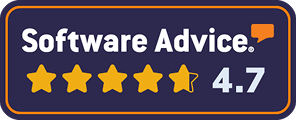In today’s hyper-connected world, personal branding isn’t just a buzzword; it’s a necessity. Whether you’re a professional climbing the corporate ladder or an entrepreneur launching your next big idea, personal branding sets you apart from the competition. But let’s face it—building a personal brand without sounding like a walking advertisement is no easy feat.
Think about it: How do leaders like Oprah Winfrey or Simon Sinek connect with audiences? They provide value, tell authentic stories, and never feel “salesy.” That’s the sweet spot you should aim for—establishing your authority while staying genuine.
What Is Personal Branding?
Personal branding showcases your skills, values, and expertise to create a lasting impression in your industry. Unlike self-promotion, which can feel like shouting, “Look at me!” personal branding is more subtle—it’s about showing, not telling.
For example, consider LinkedIn posts by thought leaders like Adam Grant. His posts share insights rather than boast about achievements, which is the essence of personal branding: focusing on the audience rather than yourself.
Why Is Personal Branding Important for Professionals?
Let’s break it down:
Establish Trust and Credibility
A strong personal brand builds trust. People who see consistent expertise are more likely to trust your recommendations.
Differentiate Yourself
In crowded industries, standing out is critical. Your personal brand helps showcase what makes you unique, whether it’s your leadership style, creative ideas, or problem-solving skills.
Expand Your Network
A well-crafted brand can open doors. You’ll attract like-minded professionals, collaborators, and mentors by presenting yourself authentically. Building a strong network allows you to exchange ideas, gain valuable insights, and uncover hidden opportunities. Authentic connections within your network can lead to meaningful partnerships and long-term growth.
Example: Gary Vaynerchuk (Gary Vee) uses his personal brand to connect with entrepreneurs worldwide. His expertise and relatability make him a go-to voice in digital marketing.
How to Build a Personal Branding Strategy That Feels Authentic
1. Define Your Branding Objectives
Start by asking yourself:
- Who am I trying to reach?
- What do I want to achieve with my personal brand?
For example, if your goal is to become a thought leader in sustainability, your audience might include environmental organizations, policymakers, and eco-conscious consumers.
Align your personal values with your branding goals. This creates authenticity and ensures your message resonates.
2. Identify Your Unique Value Proposition
What sets you apart? Maybe it’s your knack for simplifying complex topics or your ability to inspire action. Your unique value proposition (UVP) is your branding superpower.
Example: Brené Brown focuses on vulnerability and courage, which are which are rarely explored in leadership. Her UVP tackles the human side of success.
3. Create and Share Content That Adds Value
Content is king—but only if it’s meaningful. Share blogs, videos, or podcasts that educate, inspire, or solve problems for your audience.
- Educational Content: Write your posts breaking down industry trends.
- Inspirational Stories: Share lessons learned from failures or challenges.
- Actionable Insights: Offer tips or strategies people can implement immediately.
Example: Author James Clear consistently shares practical advice on building habits, making his brand synonymous with self-improvement.
4. Build Your Personal Brand on Social Media
Social media is the stage where your personal brand performs. Platforms like LinkedIn, Twitter, and Instagram allow you to showcase your expertise, engage with like-minded professionals, and share content that resonates with your audience.
How Should a Candidate Maintain Their Profile?
- Keep your profile updated with your latest roles, certifications, and accomplishments.
- Regularly engage with industry-related posts to increase visibility.
- Use a professional yet approachable for candidate profile picture and customize the background banner to reflect your brand.
Engaging With Your Audience
Consistency is crucial. Post insights, share industry news, and join meaningful conversations in your niche. Remember, your goal is to build relationships, not just accumulate followers.
5. Leverage Storytelling in Personal Branding
Storytelling is the heart of authentic personal branding. Humans are wired to connect through stories; sharing your journey can make your brand relatable and memorable.
- Start With Your “Why”
Why did you choose your career path? What motivates you every day? For example, if you’re a designer, share how a childhood love for art shaped your career.
- Share Your Challenges
People connect with vulnerability. Discuss obstacles you’ve overcome and the lessons learned.
- Highlight Your Achievements Subtly
Instead of bragging, frame achievements as milestones in your journey. For instance, “Leading a team of 20 to complete a project felt rewarding after years of refining my leadership skills.”
Example of Impactful Storytelling
Take J.K. Rowling, who often shares her journey from struggling as a single mother to becoming a global literary icon. Her authenticity inspires millions without seeming boastful.
6. Build Trust and Credibility in Your Industry
Trust and credibility form the backbone of a strong personal brand. People must believe in your expertise and integrity before associating your name with excellence.
Consistency Is Key. Your branding message should remain consistent across all platforms, whether it’s professional posts, personal blogs, or public speaking engagements. This coherence reinforces your identity and builds trust.
Gather Testimonials and Endorsements
Ask former colleagues, mentors, or clients for recommendations on professional platforms or testimonials for your website. Social proof validates your expertise and strengthens your brand.
Engage With Your Industry
Become a known voice in your field by:
- Joining industry-specific forums or groups.
- Attending webinars and conferences (and sharing your takeaways).
- Publishing thought leadership articles or case studies.
Example: Neil Patel, a digital marketing expert, gained credibility through consistent blogging, actionable advice, and speaking engagements. His name is now synonymous with online marketing success.
Pro Tip: Building trust takes time. Focus on delivering value consistently, and credibility will naturally follow.
Conclusion
Building a personal brand doesn’t have to feel self-promotional. The key is to focus on your audience, provide value, and stay authentic. Remember, your brand is the sum of what you do, say, and create—so make it count.
Start small. Share your first post. Write your first blog. And remember, your personal brand is a journey, not a destination. So, take the first step today and transform into a trusted professional.






.webp)






